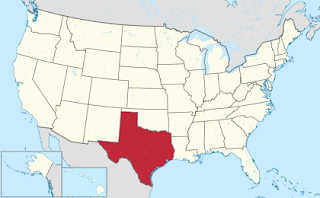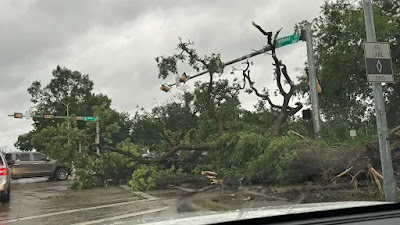Scientists say storms like those that battered Houston could become more intense as the planet warms, though pinning down trends is still challenging.
Shattered windows and caved-in walls. Toppled power lines and trees. The severe storms that swept through Houston and the Gulf Coast on Thursday left all the destructive traces of a hurricane, yet they didn’t blow in from the tropics.
Violent clusters of thunderstorms cause extensive damage across the United States each year, not just through rain and flooding, but also through hail, tornadoes and walls of blasting wind. Here’s what to know about such storms, and how they might be changing in our warming climate.
Global warming creates conditions more favorable to severe storms.
As the planet warms, severe storms of all kinds are likely to deliver even bigger payloads of rain. The reason: Warmer air holds more moisture, which effectively increases a storm’s capacity to carry precipitation.
Because the air can hold more moisture, that also means there is more water vapor in the sky that can condense into liquid, forming clouds. The heat energy released into the atmosphere by this condensation is what feeds thunderstorms. In short, more condensation, stronger storms.
Warming might also increase the amount of instability in the atmosphere, which provides more energy to lift moist air rapidly skyward during storms.
Scientists are still trying to understand how this is playing out.
Just because the ingredients are in place for a powerful storm doesn’t mean a powerful storm always materializes. Plenty of other factors shape when and whether storms form, and how destructive they become, which means it’s not straightforward to determine how global warming might be affecting overall storm trends.
“Theoretically we understand very well what’s happening,” said Andreas F. Prein, a climate scientist at the National Center for Atmospheric Research in Boulder, Colo. “But how this then translates into severe convective storms, and what we saw yesterday, is a little bit more questionable.”
There isn’t clear evidence, for instance, that tornadoes have become more frequent or intense in recent decades. They do, however, seem to be happening in more concentrated bursts.
Thunderstorms can also produce strong winds that fan out in straight lines rather than twisters. In a study published last year, Dr. Prein estimated that much larger areas of the central United States were now experiencing these straight-line gusts compared with the early 1980s.














No comments:
Post a Comment